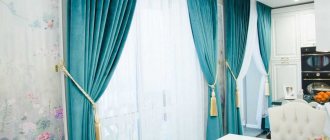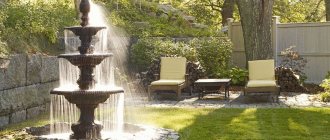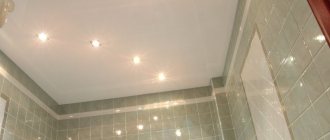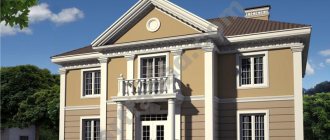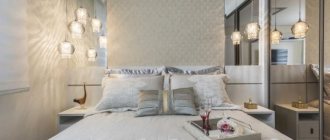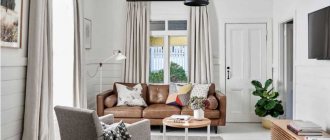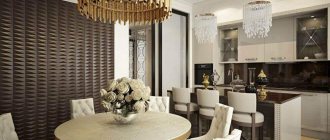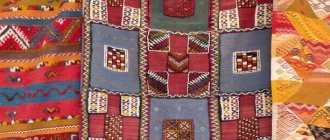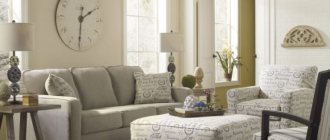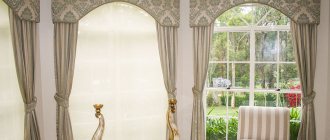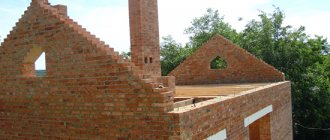Material prepared with the support of
Have you already decided that you are ready to “go into design”, but have not yet decided which one? The same type of tasks as a UI designer does not meet your ambitions, and are you ready to apply your skills in another design field?
In 2021, the stock platform Depositphotos, which has been helping some designers get work done faster and others earn money remotely for a decade, decided to analyze how many types of design professions there are.
What do a motion designer and a communications designer have in common? Will an architect understand a speculative designer? Let's explore 19 design trends together.
Architecture
Who to learn from - Ludwig Mies van der Rohe, Frank Lloyd Wright, Zaha Hadid
Just a few years ago, architecture was called the highest form of design. And it’s not surprising, because it’s hard to imagine something larger than a giant tower or bridge several tens of kilometers long.
Architecture aims to transform the environment so that it becomes both more usable and attractive. The functions of objects, the optimal technical solution (the building must be reliable, inexpensive and as simple as possible to construct), aesthetics - these are the three pillars of architecture.
Declension of the noun design
| Case | Question | Unit | Mn. number |
| Nominative | (who what?) | design | designs |
| Genitive | (who, what?) | design | designs |
| Dative | (to whom; to what?) | design | designs |
| Accusative | (who, what?) | design | designs |
| Instrumental | (by whom, what?) | design | designs |
| Prepositional | (About who about what?) | design | designs |
Communication design
Communication design uses ready-made graphics, but its task is to make sure that important information comes to us in an understandable form. The result of specialists in this industry is saving the user’s time (usually we are talking about a network user, but the category is not limited to this) and performing a specific targeted action.
In general, communication design is the design of interactions between brands and individuals with target audiences on different platforms. It is a highly specialized industry that overlaps somewhat with PR, marketing and visual design in general.
Industrial (industrial) design.
The purpose of industrial design is to determine the functional features, qualities and appearance of industrial products.
Interaction design.
Interaction Design is a design category that deals with the development of interactive digital products, systems, and services.
Transport design.
Transportation design originated in the early 1920s in America.
This type of design aims to create a logical, fashionable and comfortable car shape. Modern automotive design solves many problems, from creating an appropriate image of the car to convenience in the cabin.
Costume design
Who to learn from - Edith Head, Colleen Atwood, Alexandra Byrne
Costumes are made for theater and cinema, as well as specialized costume events (for example, celebrity theme parties, “masquerade” holidays like Halloween, festivals). The clients of these designers are also ateliers.
The difference between a costume designer's job and a traditional fashion designer's is the goal. Costume design is work on the visual image of a specific (specific and known in advance!) character, while the fashion designer sews clothes based on the needs of a wide audience.
The costume designer takes into account the image of the hero, the historical era and the peculiarities of filming (not all real materials look believable and recognizable in the frame).
Design as a system
The work of a designer is very multifaceted. When designing, the designer has to take into account many factors - these are the characteristics of the consumer (gender, age, nationality, social status, etc.), geographical location; knowledge of the production process and materials is required. Over the past half century, the practice of design has undergone many changes: the work of individual artists has in most cases been replaced by the work of entire teams or design departments within a firm, or independent design firms. At the same time, oddly enough, the formulation of theoretical questions over these half-century has not brought anything significantly new. Art critic Herbert Read, author of the first serious work on design, entitled Art and Industry, published in 1934, views design as the highest form of art . Also in 1934, the first edition of John Gloag's book, Industrial Art Explained, was published. Gloag considers design from the point of view of the designer’s responsibility to “normal” capitalist society, in the aspect of professional ethics. At the same time, he sees design as an ordinary technical operation in the production process, equivalent to any other engineering operation. The famous Italian designer Gio Ponti, editor of the Domus magazine, considers design from the point of view of professional artistic possibilities, defining its task as creating a world of new and beautiful forms, things that would reveal the true character of our civilization. But no matter how people view design, they all boil down to one thing: design is a system, a complex process, a collection of many industries and operations.
...design is a system, a complex process, a combination of many industries and operations.
Thus, any design in design is a complex multi-stage process that is devoted to the creation (description, image) of a model of some non-existent phenomenon, object, device with predetermined characteristics or properties. In such a project, the feasibility of carrying out the task is substantiated, the principles of its implementation are described, and “working documentation” is offered that tells how this can be done practically.
Most often, design work is focused on achieving a single result - engineering, technological, social. The peculiarities of design design consist in its double goal setting - the design work is intended to combine both the utilitarian-practical and artistic principles in an integral structure (structure, material-physical “body”). Therefore, the “working categories” of the design process are three interrelated positions: the function implemented in the technology of operation of products or their systems (practical side), and the final image, aesthetic value (artistic content). Both sides are embodied in volumetric construction and detailed elaboration of the features of the shape of the design object. Their totality is called morphology. All three starting positions are so intertwined that it is impossible to indicate in advance what follows from what: in real design, starting work “from either end” will still not do without the others. However, understanding the nature of the final product of artistic construction—the design image—helps to see some of the patterns of these interweavings.
The essence of design creativity is a premonition, anticipation of an image and a consistent approach to it during the design process - “figurative grasping”. The basis of this is design imagination , which in the depths of consciousness evaluates the causes and circumstances of its contradictions, primarily through the expected impression of the future consumer from the implementation of these ideas. But this impression is ambiguous, it depends on the many independent structures that make it up, each subordinated to an independent set of causes and consequences. The final one - visual organization - is formed according to the laws of art, the others - the material structure and technological principles of its existence - reflect a complex of scientific and technical knowledge about the operation of these devices or mechanisms, about the properties of the materials from which they are made, about the methods of their manufacture, etc. .d.
There is another structure that permeates the design solution - ergonomic, tying this solution to the capabilities and characteristics of human nature, incl. social and psychological, that is, a complex of knowledge about a person, his medical and biological needs and options for personal development are taken into account.
Thus, the successful formation of all these structures, which form design system
- The first is “objective”, where the material, technical, operational, technological and production aspects of the design assignment are considered.
- The second is “human”, subordinating the solution of these problems to the objectively subjective requirements of the consumer.
In the most general form, they come down to four positions:
- “benefit” - the need for a design solution in production, in personal and public life
- “reliability” - insured against unexpected breakdowns or violations of the operating regime
- “comfort” - maximum convenience when using products or processes
- “beauty”, intriguing all consumer expectations in the harmony of the form of design products.
Thus, design is truly a system that connects many sciences and processes. It is interesting to note that this relatively harmonious system of theoretical positions does not look so definite in real life. If only because in design creativity there are no stable preferences for any means of expression - they easily replace each other. And when designing, say, a lamp, the effect desired by the author is achieved by the targeted use of the original form, the unusual coloring of its individual parts, and an unexpected choice of structural materials, etc.
Game design
Who to learn from - Sid Meier, Shigeru Miyamoto, John Romero
Game design is a top niche in the market not only for design, but also for digital products in general. The gaming sector generates several times more profit than smart homes, health applications and electronic banking. As for game designers, their profession is becoming more in demand every year, and the artistic discoveries made by them influence the design industry in general. For striking examples, we recommend taking a look at “Visual Trends 2020” from Depositphotos and find out that neon and futurism came into fashion in 2020 precisely from modern games.
However, game design, in addition to working on the aesthetics of the game universe, involves designing the gameplay. A game designer must have the skills of a screenwriter, artist and engineer. His task is to develop the players’ goals, establish the rules of the game world, and think through the sequence of tests.
Various definitions of the concept “DESIGN”
Design (English design) - project, development, drawing, drawing; design, drawing, drafting. Design (from the English design - plan, project) is a special type of activity (type of design), in which an object, in addition to its main purpose, is given the qualities of beauty and increased functionality, ergonomics and a clear social orientation. Design is a creative activity whose purpose is to determine the formal qualities of objects produced by industry. These qualities of form relate not only to appearance, but mainly to structural and functional connections that transform the system into a holistic unity from the point of view of both the manufacturer and the consumer. Design seeks to embrace all aspects of the human environment, which is determined by industrial production (definition given by ICSID - the international organization of design). Design is the practice of designing useful and beautiful things. Design is a method of identifying and presenting the essence of a product being created and put on the market. Design is the appearance and quality of workmanship of an object or thing. Design is the theory and practice of “decency” of the disordered objective world, its harmonization. Design is a design method taking into account limited resources. Design is the corporate style of the product. Design - increasing the aesthetic value of objects and technical objects. Design - taking into account the human factor in engineering design. Design is artistic construction. Design is a systematic approach to designing various things. Design is part of marketing, a way of promoting a product to the market. Design is a type of artistic creativity. Design is a materialized, material way of communication between the designer (design artist) and the consumer (buyer, user). Design - design as a process of awareness of activity. Design is an innovative activity, due to its problematic nature, and due to the constant novelty of the task, the integration of various types of activities is required. Design is a creative activity, the purpose of which is to create a harmonious subject environment that most fully satisfies the material and spiritual needs of a person. Design is a field of design activity that covers the theory and practice of creating a subject environment in all spheres of human life. Design is a specific field of activity for the development (design) of a subject-spatial environment (in general and its components), as well as life situations in order to give the design results high consumer properties, aesthetic qualities, optimization and harmonization of their interaction with man and society. Design is a combination of utility and beauty... Design is a synthesis of art and technology... Design is a universal (total) design... Design is the humanization (humanization) of technology... Design is the representation of consumer interests in production... Design is a sign of the third civilization... Design is the design of material objects and life situations based on the layout method with the necessary use of scientific data in order to impart aesthetic qualities to the design results and optimize their interaction with man and society. This determines the presence of social consequences inherent in design, which also manifest themselves in the formation of personality.
The term “design” can refer to the project itself, the design process and its result – the completed project.
Design is a conscious and intuitive effort to solve a problem that can never have a single correct solution. The result is an infinite number of solutions, with some solutions being more correct than others. The correctness of decisions depends on the embedded semantic meaning.
Design (English) - derived from the Italian “disegno”, means not only a drawing or drawing, but also complex things - the entire area of \u200b\u200bthe artist’s work. Design - English project, image, plan, idea, unusualness, non-standard activity.
Design , as a phenomenon that combines science, art and technology, has a number of features similar to the features of all three components. It is this unique combination and integrity of these features that is unique and unique to design.
— Functionality – how useful, informative, and functional the selected object is. The method for solving design problems is the layout method. - Aesthetics - in many cases, designers are primarily tasked with changing and improving appearance, rather than technical improvements. This is technology's price for betrothal to beauty. — Innovation — do not confuse or replace the concepts of design and styling. Changing the color of an item is not all. I would like to see “cerebral” searches in each object, in each - the desire for perfection. - Subjective criterion - individual assessment of the quality of novelty, wit, unexpectedness of decisions and approaches to things, objects and situations (at the level of liking - not liking)
All of these and probably other existing definitions, in principle, reflect the essence of design, although none of them is complete or absolutely correct. Moreover, there is no such definition and cannot exist, since every thinking person brings his own idea to it.
Technology. Grade 10. Section “Fundamentals of artistic design of products” N.V. Voronov “Design. Russian version". – M., 2000.
Graphic design
Who to learn from - Paul Randt, Milton Glaser, Stefan Sagmeister
Graphic design is a type of design with which in 2020 designers in general are associated. A graphic designer works with visual elements, but his goal is not purely aesthetic. She is communicative. Effectively delivering a message from a brand or the author of the idea (in the case of an illustration) is its main task.
As a rule, a graphic designer is not limited in the means of work and the place where his work can appear. Depending on his specialization, he can create illustrations and collages, process photographs and complement them with graphic elements, create fonts or work with the brand communication palette. The main difference from an online communication designer is the direct creation of work.
Fashion design
Who to learn from - Coco Chanel, Yves Saint Laurent, Karl Lagerfeld
As we have already written, clothing design is significantly different from costume design, since in this case the designer’s efforts are not aimed at working with a specific character, who must make the right impression on a theater or television viewer. A fashion designer works on clothes that his target audience will wear. Clothes should be comfortable within the buyer's lifestyle, and also express a certain idea.
Information Design
Who to learn from - Paul Maixner, Edward Tufte, Jeff Raskin, Jeff
Information design is a type of graphic design, which is characterized by the fact that the designer is faced with the task of illustrating a large amount of information in such a way that an Internet user, book reader or television viewer quickly assimilates it. The requirements for this profession are skills in structuring information and understanding the specifics of its perception.
This area of design overlaps somewhat with communications design, but is much closer to the designer's “working tools”: the communications designer plans information campaigns and user interactions within products, and the information designer directly designs the visual objects for such communication. Here's an example of a Depositphotos infographic.
An information designer is hired to work on websites, information resources, and reference publications.
Connection with other words
Words starting with design:
- designer
- designer
- designer
- designer
What is design (adjectives)?
Selection of adjectives for words based on the Russian language.
modern new best computer original general fashionable good ultra-modern unique architectural internal industrial unusual graphic magnificent external interesting beautiful simple thoughtful awkward similar exquisite perfect classical European stylish various acoustic unobtrusive excellent pleasant own beautiful other author's old-fashioned impeccable worthy industrial font electronic old branded standard Japanese cool elegant strict exclusive original eccentric special cute open Italian jewelry cemetery obsolete television local individual exotic
What can design do? What can you do with design (verbs)?
Selection of verbs for words based on the Russian language.
engage make differ do have remind seem evoke impart transfer give reflect allow to embody originate leave like leave engage think up answer say accept stay lose repeat develop get require imitate throw wear change awaken supply look amaze seem develop let float serve begin correspond invigorate stare provide look amaze hint settle down create turn out to surpass manifest pause indicate allow to endure cause cause delight impress generate
Associations to the word design
pole style hundred teapot view London genus idea pet shop ship rally buyout Venice Coeloma hotel use textiles zone work epicenter university beverly corner goal mass convenience canterbury country paris disco internet spirit development danny interior computer light consumer goods salon west technology league likhva residence new middle thing creation gorynych junior house street dacha room clamp calculation Lubyanka past flaw object particular development system Jessica
Anagram words design
rear
Scope of use of the word design
General vocabulary Advertising Programming Architecture Dental implantology
Interaction Design (IxD)
If you've just entered the field of digital design, you've probably at least once confused UI (user interface design), UX (user experience design in general) and the less popular IxD category, which involves working with interaction design. What does the user journey look like inside the product? What design element can become a guiding light for the user? How can I help him get the result he was looking for when he opened the application or website? It's all about IxD.
Interaction design is a branch of UX, so most designers and employers don't classify it as a separate category. However, it is not limited to the online sphere, and is also closely related to other types of design, including industrial and product.
Design object
The object of design can be almost any new technical industrial product (set, ensemble, complex, system) in any sphere of human activity where human communication is socially and culturally determined.
Main categories of design object
- An image
is an ideal representation of an object, an artistic and figurative model created by the designer’s imagination. - Function
is the work that the product must perform, as well as the semantic, symbolic and value roles of the thing. - Morphology
is the structure, structure of the form of a product, organized in accordance with its function, material and method of manufacture, embodying the designer’s intention. - Technological form
is a morphology embodied in the method of industrial production of a design object as a result of artistic interpretation of technology. - Aesthetic value
is the special meaning of an object, revealed by a person in a situation of aesthetic perception, emotional, sensory experience and assessment of the degree of compliance of the object with the aesthetic ideal of the subject.
Interior design
Who to learn from : Philippe Starck, Elsie Anderson de Wolfe, Tom Dixon
Due to the fact that most people are visual people, that is, most of the information about the world around them comes to them in the form of pictures and is perceived through their eyes, there are as many types of design as there are objects with which people interact. Those objects that we encounter most intensively form separate design universes around themselves and become overgrown with canons. Interior design is one example.
An interior designer must have engineering knowledge (but not necessarily as deep as an architect), knowledge of materials, cladding technologies, the current range of furniture and much more. In addition, he must have spatial imagination, understand the psychology of color and be able to visualize his vision of the “insides” of a house, office or other room in electronic form.
The task of the interior designer is to take into account and think through the lighting of the room, make it functional and comfortable.
Industrial and product design
Who to learn from - Marc Newson, Karim Rashid, Antonio Citterio
What is the difference between industrial and product design? These categories are really close to each other. At the same time, “product design” is often used as an analogue of industrial design in the production of physical products. But there is still a difference between them.
An industrial designer thinks through the physical characteristics of the future product and its functions. His task is to make the product simple to produce, but at the same time attractive, convenient and functional. He defines the product's appearance and then passes it on to an engineer who can come up with a new product design for the manufacturer.
Product design is more than just the external aspect of things. A product designer in the offline world takes control of the entire production cycle, and, accordingly, not only “draws” products, but also determines technologies and internal materials. In the digital realm, product designers are not involved in production, but are involved in UI, UX, and interaction design.
Design styles
There are quite a lot of them. Design ideas are realized using a variety of materials. This or that design of a space, residential or commercial, reflects mainly the tastes and preferences of the owners. Lovers of natural, natural materials, for example, when decorating, rely on oriental or rustic types of apartment design. Today there are quite a lot of companies that decorate spaces at a professional level. Moreover, it should be noted that modeling and design are used not only indoors. The decor of building facades is varied. A popular trend today is the design of a balcony or loggia. This space is often turned into an office or recreation area, using the usable area of the home as much as possible. One way or another, no matter what the design ideas are, all elements must be in harmony with each other. In order for the decor to be truly attractive and functional, it is necessary to correctly select the color, material, and be able to combine details.
Motion design
Who to learn from - Yaniv Friedman, John Schlemmer, Mark Wheeler
Traditional graphic design tends to be static in nature. Motion design is the next stage of graphic design, as it involves working with a dynamic picture and applying the principles of filmmaking, animation and sound directing (in some cases). Like graphic design, motion design is not limited to any area of human life. We encounter it in advertising, on modern websites, in movies.
The motion designer must convey a message to the recipient (whether it is a statement that his customer’s product is worth attention or a call on the site user to delve into the article and remember something specific). A dynamic picture should be expressive and concise. Important skills for a motion designer are working with multimedia editors, understanding the basics of storytelling and sound design.
As a rule, a motion designer illustrates a certain concept using a moving image, rather than telling a story (like a cartoonist) from beginning to end. To reduce the cost of producing creative projects, they use stock videos.
Modern
If we talk about what types of modern design exist, then this direction should be mentioned first. Modernism is interesting for its unexpected solutions. The style itself has several directions. One of them is art nouveau. In such an interior, all the details seem natural, natural, and not invented or created by man.
Multimedia design
Who to learn from - Mike Perry, Timothy Goodman, Stephen Harrington
The New York Times' multimedia projects were once the icon of design in the industry. The publication is still launching multimedia interactive stories online, which any subscriber can become a part of. Spectacular and engaging, they became a prototype of how product presentation and presentation of information in general could look. The idea of multimedia design is innovative and more effective ways of communication, which brings it closer to communication and UX design.
Modern multimedia design involves working with many components: graphic design, program code, script and interaction logic. Professionals in this field typically have technical skills and artistic vision, as well as a good imagination. They create multimedia products from scratch and take into account the ergonomics of the user interface and the customer’s commercial objectives.
Design object
The object of design can be almost any new technical industrial product (set, ensemble, complex, system) in any sphere of human activity where human communication is socially and culturally determined.
Main categories of design object
- An image
is an ideal representation of an object, an artistic and figurative model created by the designer’s imagination. - Function
is the work that the product must perform, as well as the semantic, symbolic and value roles of the thing. - Morphology
is the structure, structure of the form of a product, organized in accordance with its function, material and method of manufacture, embodying the designer’s intention. - Technological form
is a morphology embodied in the method of industrial production of a design object as a result of artistic interpretation of technology. - Aesthetic value
is the special meaning of an object, revealed by a person in a situation of aesthetic perception, emotional, sensory experience and assessment of the degree of compliance of the object with the aesthetic ideal of the subject.
Software design
The most striking examples of software design are ready-made operating systems, websites and products aimed at “revitalizing” websites. The tasks of a software designer are radically different from what a graphic designer is used to working with. The results of its work can be presented in the format of flowcharts, ready-made programs or UX prototype
A software designer is more of an incendiary than an artist. He is interested in the logic of the product, algorithms that help the future user solve their problem. This designer interacts with programmers and graphic designers, often being above them according to the professional chain of command.
Sound design
Who to learn from - Ben Burtt, Jack Foley, Glenn Freemantle
The term “sound design” already speaks for itself. In this case, the specialist works not with visual signs, but with radial signs. This profession will be updated in 2021 through the widespread use of voice interfaces and innovations in the development of voice assistants. However, this is not the only niche in which a sound designer can shine.
Like images, sound evokes emotions and can set the tone of communication with the user. So, sound design involves this creation of sound elements. A sound designer develops an audio story by combining original or third-party samples. Required skills: musical education, knowledge of acoustic theory. The areas in which this specialist works are digital product design, film and television production, theater, radio and advertising.
Interface design (UI)
Who to learn from - Joshua Porter, Whitney Hess, Ryan Singer
While a graphic designer works with both physical and digital objects, a UI specialist designs exclusively web interfaces. Roughly speaking, everything that we constantly encounter on our favorite sites (and that we hardly notice) - buttons, menus, typical page structure, tooltips and much more - is the product of the work of an interface designer.
The task of a UI designer is to ensure comfort and ease of interaction between the user and the software product. This specialist designs the design shell of products, which can then be filled with texts and illustrations, depending on its purpose.
A UI designer must consider user experience, from the point of view of which, the best interface is one that allows the user to solve their problem as quickly as possible, without outside help and without experiencing any stress. Due to the fact that a UI designer is sometimes also the one who thinks through the user’s path inside the product, a UI and UX specialist in a small project may turn out to be the same person.
User Experience Design (UX Design)
Who to learn from - Andrew Caldwell, Erica Hall, John Maeda
A UX designer is responsible for designing the user experience inside a web product. Like all other designers, he must analyze the user's problem or task, and then immerse him in a visual environment that will help him find an effective solution (for example, clicking the right button and sending a request).
A UX designer also serves the interests of the company for which he works - often he needs to come up with a way to use the visual environment of a site or application to push the user to the decision the company needs (buy something else, leave a review, download a position).
This specialist does not so much create design prototypes as determine the logic of the web product and the strategy for interacting with the user. In addition to graphic skills, he must understand business analytics, user psychology and, of course, follow UX design trends.
Web design
Who to learn from - Ethan Marcotte, Lotta Nieminen, Chris Coyer
Web designer is a general title for professionals who work in digital technology and do not create physical objects. UI, UX, motion graphics, graphic designer who works with digital products, as well as IuD - all these people can call themselves web designers.
The task of a web designer is not only to “make sites beautiful,” but also to think about how the user will interact with their different elements, what he will feel, and what actions he will take after this contact. In addition to purely artistic decisions, the web designer is responsible for the structure of the site and standard elements of information design. Typically, this person is involved in the creation of the product at all stages (research, design, implementation of its ideas and studying the results after launch).
Art design.
The main motto of art design is the expression: “Art above all!”
Art design originated in the 80s of the twentieth century in Italy. Initially, this type of design affected furniture and interior solutions.
The main distinctive features of the new style were:
– unusual images, forms and materials;
– application of different styles in one object;
– use of the hand-made principle (made by hand);
– high artistic detail of shapes, textures and surfaces;
Consumers liked the new concept. Many people liked the sensual and emotional art design. Nowadays art design can be seen everywhere. Any original work that could previously be called “homemade” is now called art design.
This type of design has spread to other areas, for example architecture, web design, printing, body art, etc. It can always be distinguished by the predominance of artistic and emotional motifs in the composition.
But mainly in a professional environment art design is called:
– decorative and design creativity
– floral design
– creation of jewelry
– decoration with decorative textiles
– decorative and applied arts, as well as folk art
– souvenirs and gifts.
Advice for beginners
As many design varieties as there are in 2021, it looks like there will be even more in the future. With the development of digital technologies, new niches are emerging (from the design of voice interfaces to working with applications that perceive user gestures as commands), as well as design at the intersection of several specialties, including art, marketing, technology and analog production.
Our advice today is to start mastering any design specialty with the basics, which apply equally to industrial, information and web design. A strong theoretical basis is useful for every specialist and provides much-needed flexibility in the labor market.
Another brilliant idea is to study several related disciplines at once. The Depositphotos collection of stock images will help you get started with your practice, and numerous online courses that have become available in 2021 will help you acquire knowledge.
